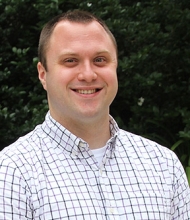ChEMS Seminar: Using Grain Boundary Complexion Transitions to Toughen Nanocrystalline Metals

Mechanical and Aerospace Engineering
Chemical Engineering and Materials Science
University of California, Irvine, CA
Abstract: Doped interfaces can have intriguing structures and, in some cases, thermodynamically stable interfacial structures can form. In this talk, we explore the usage of these “complexions” in nanostructured metal alloys, with a focus on how these features affect mechanical behavior as well as thermal stability. Atomistic simulations are used to identify the effects of chemistry, temperature and boundary character on grain-boundary structural transitions, as well as identify how these features impact plasticity and fracture. Experimental validation is provided by high-resolution transmission electron microscopy on specially-designed thin film samples that systematically explore these variables, as well as nanocrystalline alloys produced through a powder. Microcompression and in-situ bending experiments are used to quantify the effect of doping on mechanical behavior, showing that strength, strain-to-failure and failure mode can be controlled with the addition of segregating dopants. As a whole, this work lays the foundation for engineering internal interfaces to design better materials.
Biography: Tim Rupert is an assistant professor of mechanical and aerospace engineering at the University of California, Irvine, with a joint appointment in chemical engineering and materials science. He also serves as the associate director of the newly formed Institute of Design and Manufacturing Innovation (IDMI), which is focused on advanced materials processing and manufacturing technologies. His research focuses on uncovering new structure-property relationships in nanomaterials for next-generation structural, electronic and energy components, as well as increasing the reliability and lifetime of these materials. To achieve these goals, his lab uses a combination of experimental, characterization and computational techniques. Rupert has received a National Science Foundation CAREER Award, a Department of Energy Early Career Research Program Award, an Army Research Office Young Investigator Program Award and a Hellman Fellowship in recent years. He received a B.S./M.S. in mechanical engineering from Johns Hopkins University in 2007 and a Ph.D. in materials science and engineering from MIT in 2011.
Host: Professor Martha Mecartney
Share
Upcoming Events
-
MAE 298 SEMINAR: Biomechanics of Rotator Cuff
-
CBE 298 Seminar: Micro- and Nanofluidic Systems for Molecular Biosensing, Nanotoxicity, and Optogenetics
-
MSE Special Seminar: Architecting 3D Complex Materials for Sustainability
-
MSE Special Seminar: Decarbonizing Industries for a Climate-resilient Future - From Renewable Energy to Sustainable Material Recovery
-
CEE Seminar: BIM and the Digital Twin
